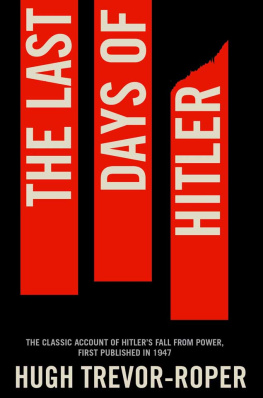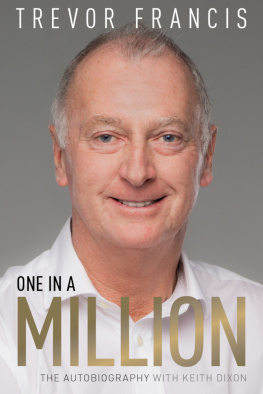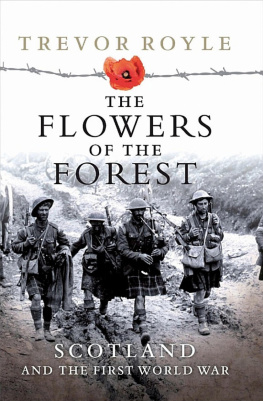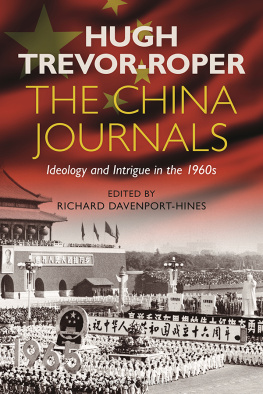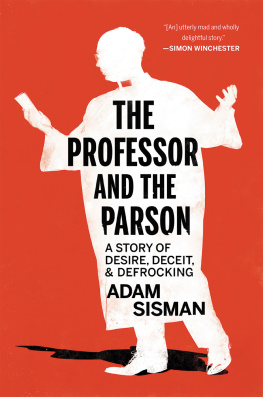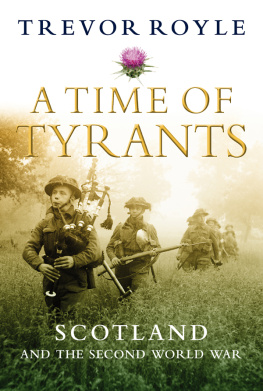Hugh Trevor-Roper - The Invention of Scotland
Here you can read online Hugh Trevor-Roper - The Invention of Scotland full text of the book (entire story) in english for free. Download pdf and epub, get meaning, cover and reviews about this ebook. year: 2008, publisher: Yale University Press, genre: Art. Description of the work, (preface) as well as reviews are available. Best literature library LitArk.com created for fans of good reading and offers a wide selection of genres:
Romance novel
Science fiction
Adventure
Detective
Science
History
Home and family
Prose
Art
Politics
Computer
Non-fiction
Religion
Business
Children
Humor
Choose a favorite category and find really read worthwhile books. Enjoy immersion in the world of imagination, feel the emotions of the characters or learn something new for yourself, make an fascinating discovery.

- Book:The Invention of Scotland
- Author:
- Publisher:Yale University Press
- Genre:
- Year:2008
- Rating:5 / 5
- Favourites:Add to favourites
- Your mark:
- 100
- 1
- 2
- 3
- 4
- 5
The Invention of Scotland: summary, description and annotation
We offer to read an annotation, description, summary or preface (depends on what the author of the book "The Invention of Scotland" wrote himself). If you haven't found the necessary information about the book — write in the comments, we will try to find it.
The Invention of Scotland — read online for free the complete book (whole text) full work
Below is the text of the book, divided by pages. System saving the place of the last page read, allows you to conveniently read the book "The Invention of Scotland" online for free, without having to search again every time where you left off. Put a bookmark, and you can go to the page where you finished reading at any time.
Font size:
Interval:
Bookmark:
THE INVENTION OF SCOTLAND
THE INVENTION OF
SCOTLAND
Myth and History
HUGH TREVOR-ROPER
YALE UNIVERSITY PRESS
NEW HAVEN AND LONDON
Editor's foreword Jeremy J. Cater
Copyright 2008 The Literary Estate of Lord Dacre of Glanton
Published with assistance from the Annie Burr Lewis Fund
All rights reserved. This book may not be reproduced in whole or in part, in any form (beyond that copying permitted by Sections 107 and 108 of the U.S. Copyright Law and except by reviewers for the public press) without written permission from the publishers.
For information about this and other Yale University Press publications, please contact:
U.S. Office: sales.press@yale.edu www.yalebooks.com
Europe Office: sales@yaleup.co.uk www.yaleup.co.uk
Set in Minion by J&L Composition Ltd, Filey, North Yorkshire
Printed in Great Britain by Cambridge University Press
Library of Congress Cataloguing-in-Publication Data
Trevor-Roper, H. R. (Hugh Redwald), 19142003.
The invention of Scotland: myth and history/Hugh Trevor-Roper.
p. cm.
Includes bibliographical references and index.
ISBN 9780300136869 (alk. paper)
1. ScotlandHistoriography. 2. National characteristics, ScottishHistoriography. 3. ScotlandCivilizationHistoriography. 4. ScotlandHistory I. Title.
DA759.T74 2008
941.10072dc22
2007032173
A catalogue record for this book is available from the British Library.
10 9 8 7 6 5 4 3 2 1
The publishers and Estate of Lord Dacre of Glanton thank the Past and Present Society for kind permission to reproduce material from Trevor-Roper's essay The Invention of Tradition: the Highland Tradition of Scotland in The Invention of Tradition, ed. Eric Hobsbawm and Terence Ranger (Cambridge University Press, 1983).

1 Unknown artist, portrait of a man said to be Hector Boece (n.d.) (King's College, University of Aberdeen)
2 After Branckhorst, George Buchanan (1581) (National Portrait Gallery, London)
3 Sir Joshua Reynolds, James Macpherson (1772) (National Portrait Gallery, London)
4 Alexander Runciman, The Death of Oscar (early 1770s) (National Gallery of Scotland, Edinburgh)
5 Franois Pascal Simon Grard, Ossian voque les phantmes (1801) (Chteau de Malmaison et Bois-Prau, Malmaison; photo: RMN/Daniel Arnaudet)
6 Jean Auguste Dominique Ingres, Le Songe d'Ossian (1813) (Muse Ingres, Montauban; photo: Roumagnac)
7 Ann-Louis Girodet, Apothose des hros franais (1801) (Chteau de Malmaison et Bois-Prau, Malmaison; photo: RMN/Franck Raux)
8 Sir Henry Raeburn, Sir Walter Scott (1822) (National Gallery of Scotland, Edinburgh; photo: Bridgeman Art Library)
9 Sir Henry Raeburn, Colonel Alistair MacDonell of Glengarry (1812) (National Gallery of Scotland, Edinburgh: photo: Bridgeman Art Library)
10 David Wilkie, George IV (1822) (The Royal Collection 2008 Her Majesty Queen Elizabeth II)
11 Self-portrait of the Sobieski Stuart brothers at Eilean Aigas (1840s) (reproduced from R.W. Munro, Highland Clans & Tartans (Octopus, London, 1977) by permission of Octopus Books Ltd and also the owner of the painting in 1980, Sir Hugh Fraser, mp , given to the author of the present book.
Jeremy J. Cater
The recovery and publication of a book which was left unfinished by its author over twenty years earlier requires some explanation. The decision depends on who the author was, how far and why the book was not completed, and what it can contribute to the present. Hugh Trevor-Roper was a master historian; and even in this short work his many talents are amply displayed as, indeed, they were so often in his collections of essays. Here, as elsewhere, we see the imaginative insight into characters; the awareness of social and intellectual context; the broad and deep vision across space and through time which allowed the drawing-in of illuminating parallels or differences; the determination to drive all interpretation as far as it would go, to arrange all explanation in a large and satisfying synthesis; the delight in the dramatic and the ridiculous; the varied and ingenious syntax; the clear, elegant and witty choice of words and metaphors that would stimulate and amuse the reader.
Trevor-Roper left this book incomplete only in a restricted sense of the word. He had not, it is true, given any of the text its final polish, preparatory to publication. Phrasing needed to be tightened, repetitions eliminated, fuller notes supplied, linking passages written: but these are matters of detail, which I shall touch on later in describing my editorial work. The eight chapters of the book now published were there in structure and in essence as they stand now. What is missing is the beginning and the end of the book as he envisaged it. Those eight chapters describe three types of myth political, literary and sartorial which he located in the context of several centuries of Scottish history. He intended to write a preliminary chapter on myth in general. Such a chapter from his pen would undoubtedly have been valuable. All that I could find of it, however, is the fragment which stands now in place of an introduction. Concerning the conclusion of the book I am less certain. In describing his project to a friend in December 1979 he hinted at a fourth myth, which would carry the analysis further down in time. The suggestion was tentative, and may even have been playful. At any rate, so far as I can find, nothing further was done in that direction. Two years later he seems to have stopped working on this book, with the present eight chapters written; other projects, other work, took over. He continued to think, talk, and correspond on this subject for several years more; but he never went back to write the larger book on it which he had once intended.
Trevor-Roper's interest in the subject was of long standing; and parts of this book are revised versions of essays already published elsewhere. In particular, chapters two and three on George Buchanan and his critics constitute a reconsidered and rewritten version of work which he published as a separate supplement to the English Historical Review in 1966. Chapters seven and eight on the rise of the tartan and the kilt first appeared in a collection entitled The Invention of Tradition, edited by Eric Hobsbawm and Terence Ranger, which was issued in 1983 by Cambridge University Press on behalf of the Past and Present Society. A very brief summary of chapters four to six on James Macpherson and Ossian appeared as an article in The Spectator magazine in March 1985. All three main sections of the book were based on a good deal of research; and they sustain challenging, and still relevant interpretations of their specific topics. Indeed, I believe that the chapters on James Macpherson and Ossian will be found to present ideas and information which are still new, despite the efforts of other writers during the twenty-five years since Trevor-Roper was at work on this area. The whole book, moreover, is greater than the sum of its individual parts. Taken together, its three sections add up to a profound and coherent interpretation of the rle of mythic feeling and mythic thinking in the cultural development of Scotland over many centuries. Considerable depth of perspective on this theme is added by the first chapter, though it is based rather on a fresh reading of the obvious sources than on the kind of detailed and original research which underlies what comes later. For that first chapter shows the construction, during the middle ages, of that mythic mould of historical self-consciousness in the Scots which was to shape their understandings and imaginings for centuries thereafter and still does, to some extent, even today.
Next pageFont size:
Interval:
Bookmark:
Similar books «The Invention of Scotland»
Look at similar books to The Invention of Scotland. We have selected literature similar in name and meaning in the hope of providing readers with more options to find new, interesting, not yet read works.
Discussion, reviews of the book The Invention of Scotland and just readers' own opinions. Leave your comments, write what you think about the work, its meaning or the main characters. Specify what exactly you liked and what you didn't like, and why you think so.

